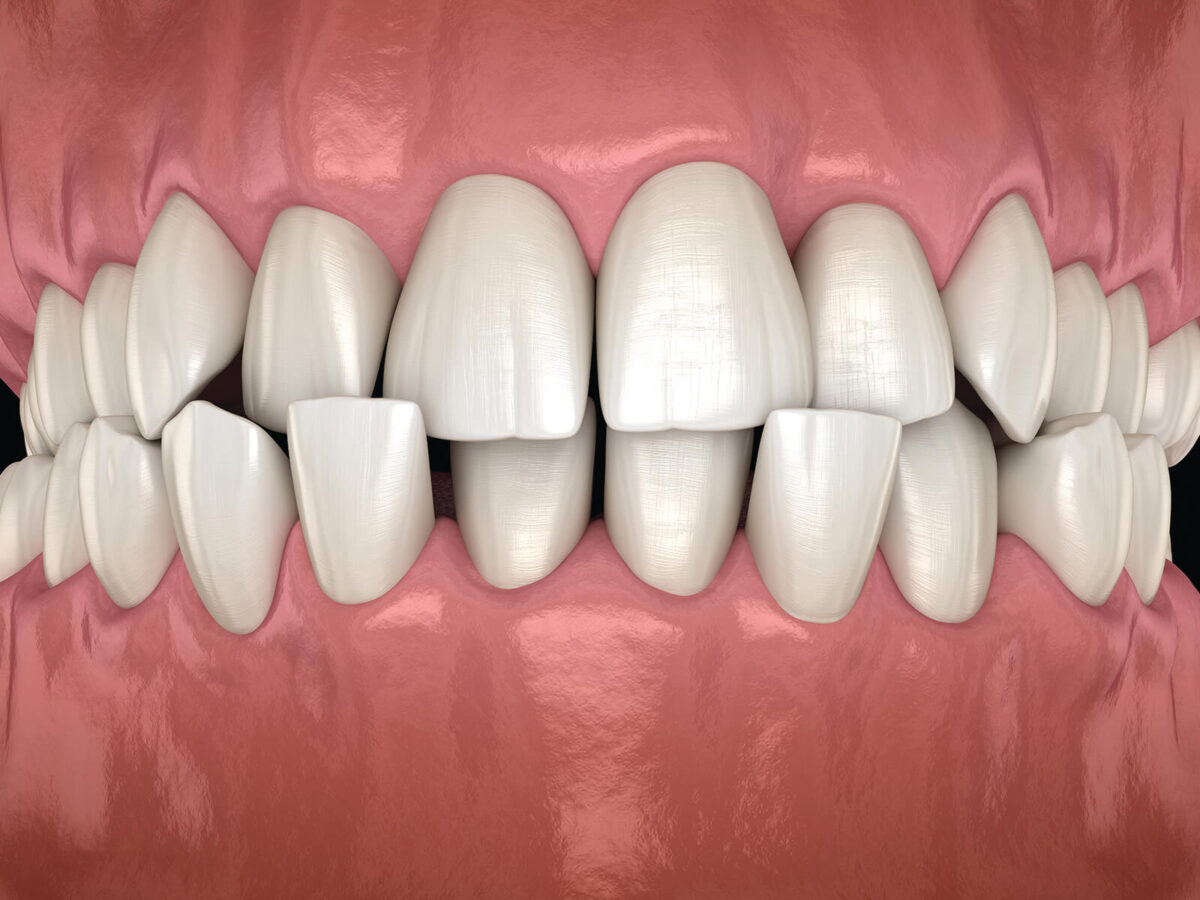Blog
Dental hygiene tips for healthy teeth & gums

Understanding Crossbites: What Are They And How Are They Treated?
Do people say that you have a crossbite smile? A crossbite is when your upper teeth fit inside your lower teeth or when both rows of teeth do not align correctly. When biting, the edges of the upper teeth should be slightly outside the lower teeth.
Besides aesthetic issues, improper teeth alignment will prompt other dental problems. It is a type of misalignment of the teeth that leads to functional problems like pain and impaired functionality while eating or speaking.
- A cross-sectional study that assessed 1554 people aged between 4 and 25 years when determining permanent dentition indicated a prevalence of 51.
- Tooth contacts were recorded as 0% for bilateral posterior crossbite and 47% for anterior crossbite.
- 2% had unilateral crossbites on the left side of the mouth, and 3% of the students had unilateral crossbites on the right side of the mouth.
6% reported having unilateral crossbite on the left side of the mouth. - However, the dental crossbite is not favorable for the health of your teeth. Fortunately, these conditions can be corrected by a dentist or dental specialist like an orthodontist or an oral maxillofacial surgeon.
In this blog post, we will discuss crossbites, their causes, symptoms, and possible treatments suggested by Smilepoint Dental.
What is a Crossbite?
Crossbite is one of the most widespread types of malocclusion, due to which the upper teeth are situated inside the lower teeth, and the backmost teeth of the upper row rest entirely outside the lower row. It may affect one or more teeth, a set of teeth at the front or back of the mouth, or the entire dental arch. For this reason, it’s critical to diagnose and treat posterior and anterior crossbites differently.
There are two classifications of crossbite: posterior and anterior.
A posterior crossbite is a condition where the lower teeth, positioned towards the rear aspect of your mouth, fit into the corresponding teeth in your top jaw. An anterior crossbite can be described as the lower anterior fitting outside the upper anterior when it shuts.
What Causes a Crossbite?
A crossbite often originates from a dental or skeletal issue or, in most cases, a combination of the two. These problems can arise from habits, delayed tooth eruption, cranial facial abnormalities, or Genetics.
Specific crossbite causes can include:
- Babies who continue to use pacifiers or fingers
- Tongue thrust during swallowing
- Missing teeth
- Teeth that are still in the mouth after a child has grown each year
- Premature shedding of baby teeth that leads to migration of teeth
- A small jaw that cannot accommodate all the teeth
- Crowded teeth and those too large to fit well for the optimal arrangement.
- Cleft palate
- Cleft lip
- Mouth breathing
Symptoms of a crossbite
There are two types of causes for crossbite: Dental and Skeletal factors.
Genetics
Some of the causes may include genetic factors in your body’s skeletal and dental systems. This means that if other people in your family have had a crossbite, this might work as a hereditary trait, and you or your child might also have it.
Circumstantial factors
Several detailed factors indicate the presence of anemia in the production process. If your baby teeth did not drop out during your childhood, or if your adult teeth were late to grow, it can be that your jawline and other teeth in your mouth took a crossbite to make up for that. If a child breathes through the mouth or sucks their thumb in late childhood, this might lead to a crossbite.
Crossbite Treatment Options
Wondering how to correct a crossbite? Crossbite treatment consists of non-surgical and surgical treatment options. The following are the procedures that are used to manage crossbite. Crossbite teeth are commonly corrected using orthodontic treatment including:
Palatal Expander: A palatal expander is given to children to gradually expand the width of the upper arch required for growing children. This orthodontic appliance is worn in the upper dental arch and on the buccal shelf of the mouth.
The appliance is then followed by turning the appliance screw using a key to widen one’s palate and jaws occasionally. It is advisable to administer this treatment to growing patients mainly because the jaw and the teeth are flexible, and the palatal bone sutures still need to join.
Braces or clear aligners: When the degree of crossbite in children and adults is mild or moderate, braces or clear aligners may be used to treat it. Both braces and detailed aligner treatment can assist in straightening the teeth to the appropriate position and treating crossbite issues.
Reverse pull headgear: This fixed orthodontic appliance can be used in young children and patients still in the developmental process with an anterior crossbite or underbite. Reverse pull headgear acts to facilitate forward growth of the upper jaw.
Habit appliances: Those who find it challenging to get rid of habits affecting their oral cavity, such as thumb or finger sucking, can utilize orthodontic habit appliances. A palatal crib is handy to stop sucking habits since fingers cannot reach the roof of the mouth and upper front teeth when a fixed palatal crib is applied.
Crossbite surgery: For adults, it may involve surgical treatment to correct crossbite. This is required mostly in skeletal crossbites, whereby the upper or lower jaw lacks the proper development.
This may include surgical expander appliances or upper jaw surgery (maxillary osteotomy where the over jaw is realigned by making cuts and moving. Treating crossbites early when the jaws are growing is advisable so that one does not have to undergo surgery in adolescence or adulthood.
Cost of Crossbite Treatment
The price of treating a crossbite depends on the treatment type, and sometimes, your choice of dentist depends on whether insurance coverage is available.
For instance, orthodontic treatments such as the typical braces necessitate approximately $5000 in expenditure. However, clear aligners may be priced differently, ranging from $2,000-$9,000.
Most dental insurance plans can provide some form of coverage for orthodontic treatments; in most cases, the patient is expected to contribute to healing, too. It’s helpful to know that many orthodontic offices, including Smilepoint Dental office, can work with patients to make the investment reasonable and provide payment options to assist in splitting the costs.
Summing It Up
Crossbite injuries might worsen if they are not addressed. However, a crossbite bite is not life-threatening. If you don’t receive therapy, it can harm your facial features and result in problems with your jaw. Uneven teeth are not only harder to clean, but they also have a higher risk of cavities and other issues.
As suggested by Smilepoint Dental, there are tried-and-true techniques for treating crossbite injuries in adults and children. If you have a crossbite, schedule an appointment with your dentist or orthodontist to discuss your options and get a diagnosis.


